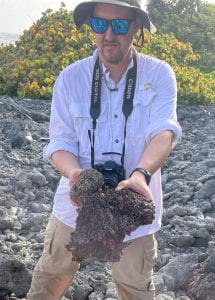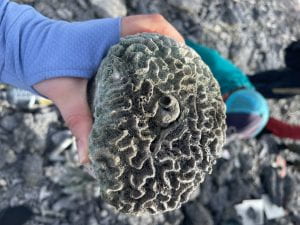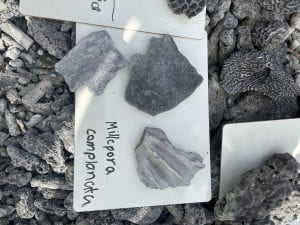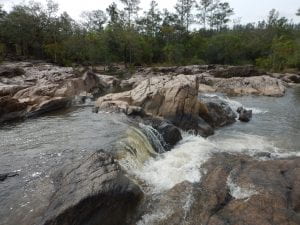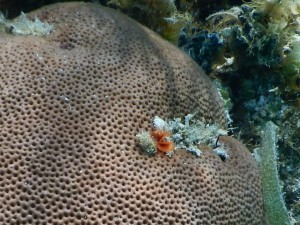Today we started to think more like field biologists by using tools such as our quadrates and transect tapes to measure densities and volumes of objects such as coral heads! We came up with a scientific question and hypothesis to test about the green algae, penicillus. We wanted to test how the penicillus density would change as we got into deeper waters. Our class could perform this data collection if we all went vertical by shoring using our transect to measure our 100 ft from shore, and then using our quadrat to search for and identify penicillus among the sea grass. Our hypothesis was that penicillus would be more abundant in shallower waters, due to higher sunlight and more nutrients, but we were wrong. Our data supported the idea that penicillus was more abundent in deeper waters and was typically seen not solitary but in groups. We presented our evidence and conclusions to our professors and they seemed impressed for our first field biology project. Maybe some day in the future we’ll try to experimentally determine the reason for this (possibly competition with sea grass or other factors).
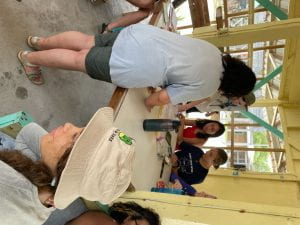 Here’s us working and discussing our presentation of our data
Here’s us working and discussing our presentation of our data
While we were working on our presentations Nyala and Caio brought us coconut meat which was a delicious snack!
Later we visited our Professor Correa’s favorite place on earth- the Coral Graveyard. The coral graveyard has all different specimens of corals that seem to be very well preserved. There was stag horn coral, different species of brain corals with cool patterns and ridges, and there was also a type of coral that is so rare that there has hardly been any sightings in the last 40 years (before the coral disease epidemic). It was very important that we know learn to match these corals up with live species that we may encounter in the reef! We also discovered a fossilized palm tree species which Dr. Solomon is pictured holding!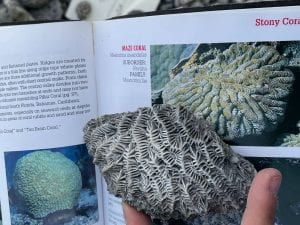
I spotted a coral specimen that had a possible annelid boring mark. This was probably a type of worm hole! It was perfectly preserved and I wonder what type of annelid could have made that mark.
There was also some specimens of Bladed Fire Coral (millepora complanata) which is a common hydrozoan reef-building coral in Glover’s reef! Bladed fire coral has very small hair-like polyp holes compared to most other species I have encountered.
I can’t wait to see more of Glover’s tomorrow and hopefully go on a boat snorkel trip!
~Maegan


